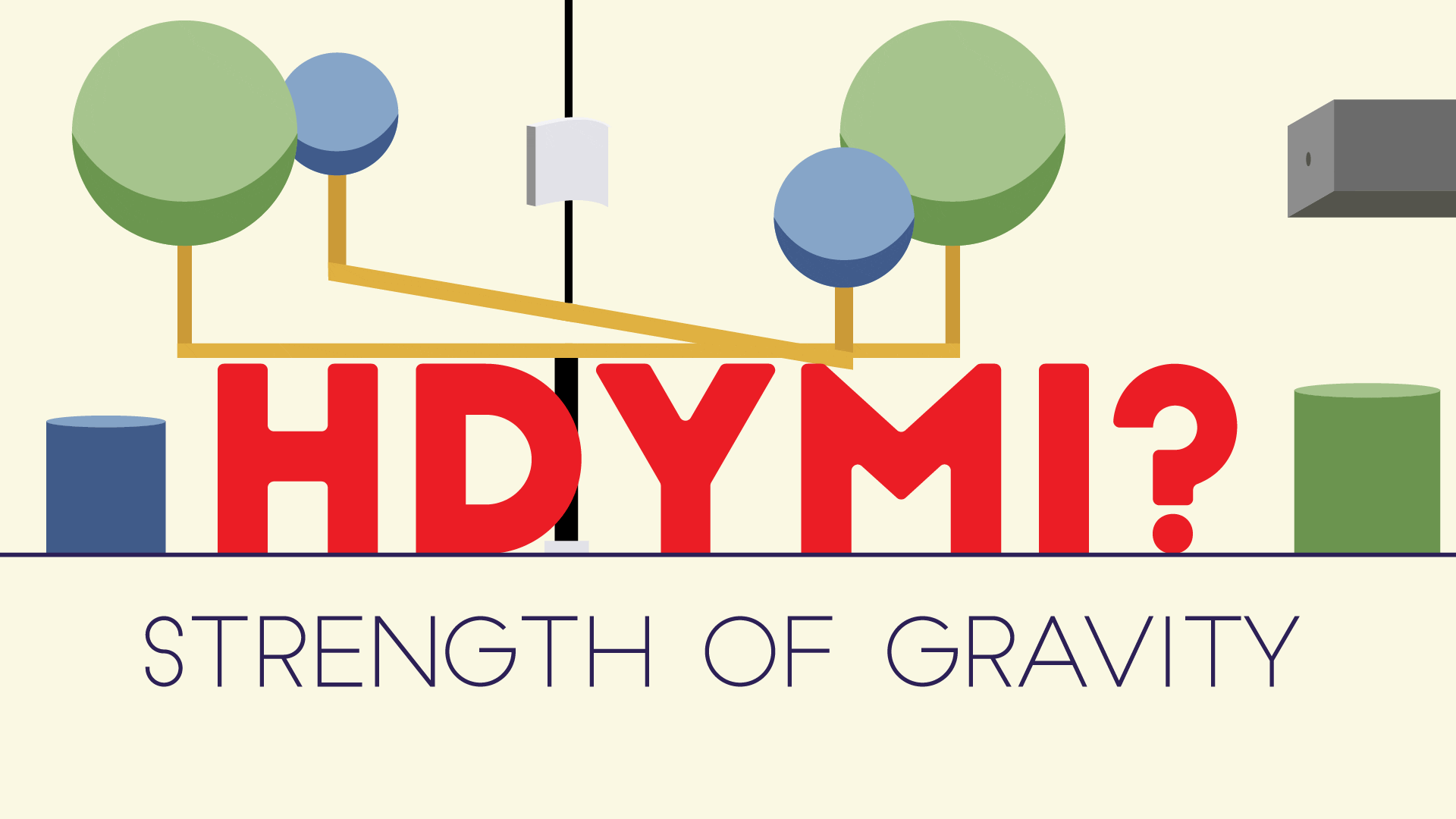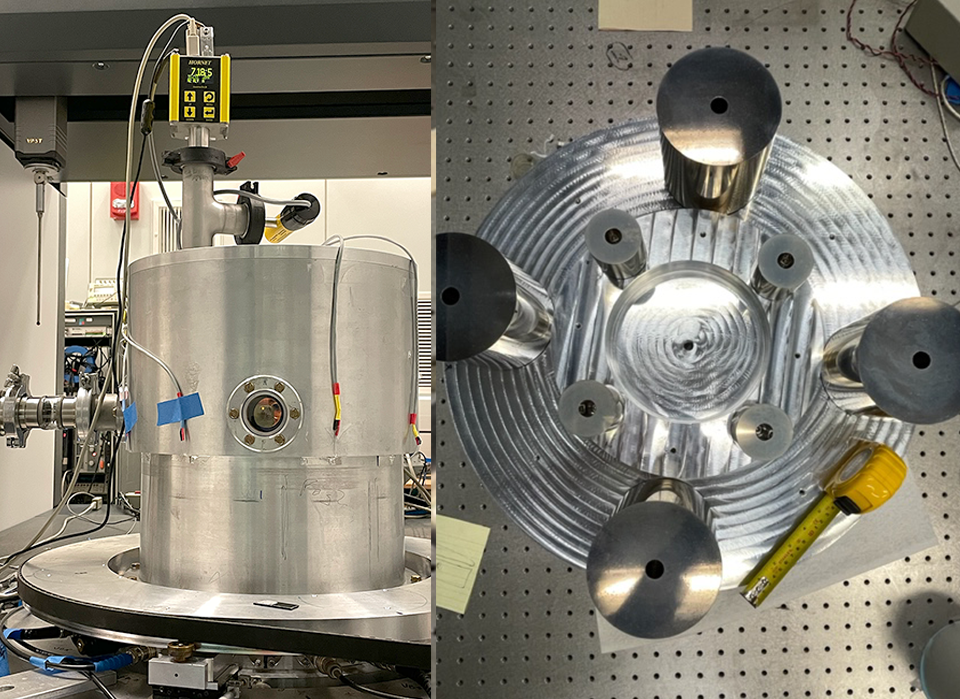How Do You Measure the Strength of Gravity?

Gravity is one of the fundamental forces of the universe. It pulls us toward the center of the Earth and keeps our feet on the ground.
Understanding the force of gravity makes it possible to predict the orbits of planets and moons in our solar system, enabling us to aim spacecraft precisely enough to land on them. Gravity holds entire galaxies together, and when stars die they sometimes collapse into black holes, whose immense gravitational pull can swallow light and other stars.
As Isaac Newton realized in the 17th century, gravity acts the same whether it’s a planet orbiting the Sun or an apple falling to Earth (though there’s no known evidence that one actually fell on his head!).
In his theory of universal gravitation, Newton showed that you can calculate the gravitational force between any two objects by taking a few simple steps: First you multiply the values of their masses. Then you divide by the distance between the objects and do it again (this is the same as dividing by the square of their distance). Last but not least, take the obtained result and multiply it by the gravitational constant, known as G, which describes how strong the gravitational force is. G is called a “universal constant” because it has the same value throughout the universe.
But unlike other universal constants, G does not have a precisely known value. It’s not easy to measure in a laboratory, where the gravitational forces between any two objects in the room are small. And believe it or not, gravity is much weaker than the other fundamental forces, such as electromagnetism, which is responsible for keeping a magnet on your refrigerator door without gravity pulling it to the ground!
The current best estimate for G is 6.6743×10−11 m3 kg−1 s−2, which is a very small number. However, not everyone agrees on this estimate because some of the world’s best experimental results do not overlap. This disagreement has become a source of consternation for scientists. But there are indications that scientists are closing in on agreement, so it may be just a matter of time before we are able to arrive at a less uncertain value for this important constant.
Ever since Newton’s time, scientists have been trying to measure the strength of gravity in the laboratory. One of the earliest known attempts was made in 1798 by English scientist Henry Cavendish, who used a device called a torsion balance to measure the gravitational attraction between two masses.
In his landmark experiment, Cavendish built a special shed on his property to control experimental conditions such as wind. Inside the shed, he placed two small lead balls balanced on opposite ends of a beam being held by a thin wire. To measure the gravitational attraction, he arranged two larger lead balls close to the small ones. He then measured the deflection of the beam caused by the gravitational attraction between the small balls and the large balls and the time it took for the wire to twist between the minimum and maximum distances. Using these results, Cavendish was able to calculate the strength of the gravitational pull between the masses and obtained a value of the gravitational constant G that was within 1% of modern measured values.

The torsion balance remains one of the most precise ways to try to measure G, and researchers around the world are developing more sophisticated versions of the design. At NIST, a team uses a set of eight masses: Four larger ones sit on an outer carousel, and four smaller ones lie on a disk suspended by a fiber. Moving the larger masses on the outer ring into different configurations with respect to the masses on the disk causes the apparatus to twist back and forth. The researchers then use a highly sensitive optical device for measuring angles to measure the rate of back-and-forth motion and deflection of the disk as the masses’ positions change.

Some recent techniques depend upon the modern ideas of quantum physics. For instance, researchers are using clouds of ultracold atoms to try to measure G. Called atom interferometry, this technique takes advantage of the fact that atoms can act like waves and interfere with each other, canceling some waves and strengthening others. In these experiments, lasers cause a cloud of cold atoms to split into two waves and travel on different paths at different elevations. The atoms at the higher elevation experience less gravity than those at the lower elevation. These clouds are then recombined and their interference pattern studied to reveal the degree of gravitational acceleration each felt. This method shows great promise for measuring gravity at short distance scales.

It’s important to note that there is a big G and a little g. The little g refers to the acceleration due to gravity at a particular location. It is the acceleration that an object experiences when it is subject to the gravitational force of a large mass, such as Earth. Unlike big G, little g is not universal: Its value is approximately 9.8 m/s2 at the surface of Earth but only 1.62 m/s2 on the Moon. To measure little g, scientists can use a variety of techniques, such as dropping a mass from a known height and measuring the time it takes to fall to the ground or using a pendulum to measure the period of oscillation and using that to calculate the acceleration due to gravity. Little g can also be measured using more complex instruments, such as accelerometers and gravimeters.
Big G, while a comparatively small quantity, plays a big role in the universe, and measuring it and little g are both practically and theoretically important. It may be the most familiar of forces, but it is also one of the most mysterious, and by improving our measurements of big G we help come closer to understanding the true nature of gravity and possibly the universe itself.

